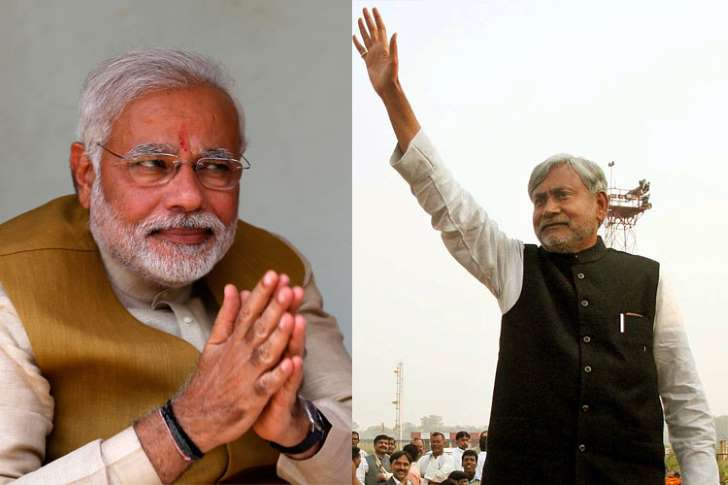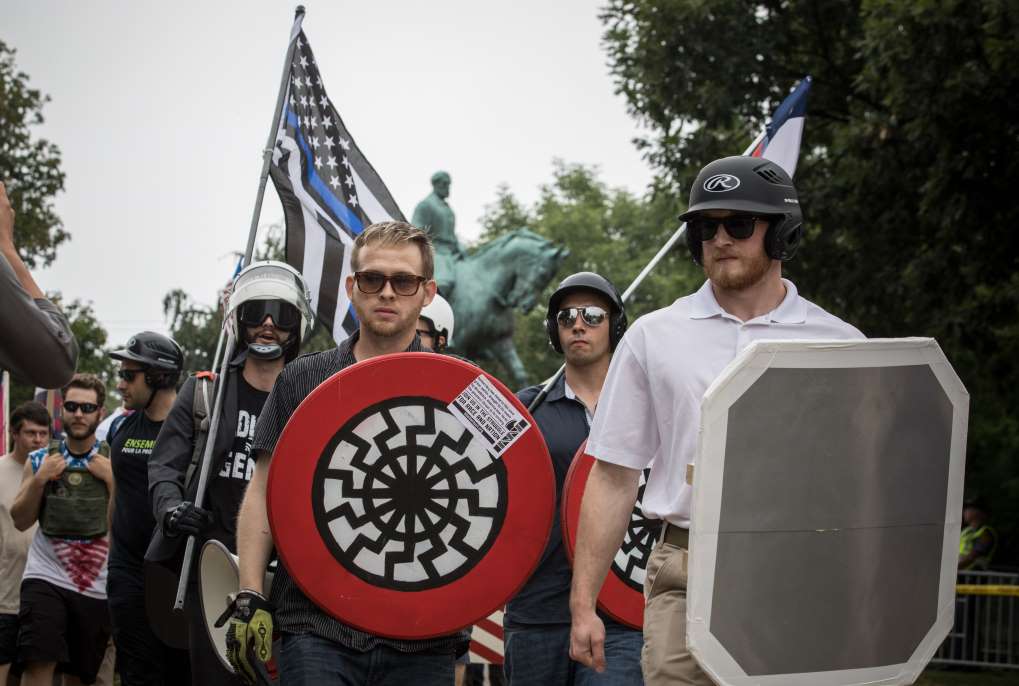November 7, 2015
Bihar is on the verge of a historic verdict, simply because whatever the result is, the state will witness the start of a new brand of politics.

When 62,780 EVMs across the state reveal what voters want, it will lead to ecstasy in one camp and gloom in other. Bihar has a 243-member Assembly and counting will begin at 8 AM with all the results expected by noon.
November 7, 2015
Bihar is on the verge of a historic verdict, simply because whatever the result is, the state will witness the start of a new brand of politics.

When 62,780 EVMs across the state reveal what voters want, it will lead to ecstasy in one camp and gloom in other. Bihar has a 243-member Assembly and counting will begin at 8 AM with all the results expected by noon.
Exit polls have given hope to both Janata Dal United-Rashtriya Janata Dal-Congress Mahagathbandhan and Bharatiya Janata Party-led National Democratic Alliance with some predicting a win for the former and other giving the state to the latter. A win for the Mahagathbandhan will seal a strong anti-NDA front and if the latter is victorious then Bihar will get its first BJP led government when on November 8, after more than one and half month long election campaign and voting in five rounds, the fate of 3450 candidates including 272 women will be decided.
The election was fought in a presidential form with Prime Minister Narendra Modi leading the NDA charge and Bihar Chief Minister Nitish Kumar holding the fort for Mahagathbandhan. While Modi banked on his 12-year long record as Gujarat chief minister and the last one and half years as the Prime Minister, Nitish highlighted his work in turning around the state and making it one of the fastest developing one in the entire country.
NDA went into the electoral fight without a local face with Modi as its mascot while Mahagathbandhan projected Nitish Kumar as the CM candidate. The sparks started flying from July itself when Modi addressed his first rally in the state in Muzaffarpur where he alleged that there was something wrong with Nitish Kumar’s DNA. This led to a fierce war of words between the two rivals with Nitish supporters flooding Modi’s residence in Delhi with samples of their hair and nails for DNA test.
But beneath the veneer, the real battle was about getting the caste and community combination right. Across the length and breadth of the state, in scores of towns, cities and hundreds of villages it was all about caste. In an election which marked a new low in the amount of vitriol and abuses hurled at the rival, the battle will finally be determined by which alliance managed to get its caste arithmetic right.
Mahagathbandhan banked on the Muslim-Yadav combine of Lalu, Kurmi-Koeri (Kushwaha) and extremely backward castes along with Mahadalits of Nitish and a chunk of upper castes still with the Congress. It is also hopeful of getting g the neutral voters on its side due to Nitish Kumar's image.
On the other hand NDA is confident of upper caste votes of BJP, Lok Janshakti Party's Paswan vote bank, Rashtriya Lok Samata Party’s appeal among Kushwahas and the Jitan Ram Manjhi’s Hindustani Awam Morcha (Secular) hold over the Mahadalits. Moreover, NDA leaders kept on harping that its campaign was development oriented and a win would erase the “BIMARU” tag from Bihar. They also pointed towards Modi’s credentials as Gujarat CM and his work as the PM.
But both the camps also deliberately tried to play up the caste and community card in the long drawn campaign. While Lalu used Rashtriya Swayamsewak Sangh chief Mohan Bhagwat’s speech for a relook on the reservation for OBCs, scheduled castes and scheduled tribes to drive home the point that BJP was anti-backward castes, the counter was quick from the NDA camp.
First it was the barb of "jungle raj" that was used to target Lalu with NDA leaders claiming Bihar had no law and order when he and wife Rabri Devi were the CM. It was followed by Modi’s speech that Lalu and Nitish were plotting give away a part of the OBC, SC-ST reservation quota to the “other community” meaning Muslims in a bid to communally polarize the elections.
While Nitish exhorted the Bihari voters to give him his due in the form of vote and not to worry about "jungle raj" as Bihar would not slide back till he was in power, he also tried to woo the electorate with his seven promises known as "Nitish Nischay". He used one of the most powerful symbols in Bihar today – school girls riding to school on bicycles – to drive home the point that rule of law prevailed and women empowerment was a reality.
He was targeted by Modi and NDA for being arrogant and breaking the 17-year long JDU-BJP alliance in 2013, of political opportunism, joining hand with Lalu whom he fought for almost 20 years, trying to woo Muslims at the expense of Hindus and derailing the Bihar growth story. Modi mocking Nitish with the taunt “bijli aayi?” is undoubtedly one of the most talked about point although its affect of the voters is questionable because the state has improved by leaps and bounds on the electricity front.
The emotive issue of beef and cow slaughter was also raised although its real impact on the ground is debatable. Most of the voters even though polarised on caste lines wished for a better future. The entire election revolved around Nitish Kumar as voters were either with him or against him.
The large turnout of youngsters and women is being claimed as a sign of their alliance winning by both the sides. The elections saw one of the highest voter turnout in the state with 56.94% electorate out of 6.68 crore exercising their franchise. Once again women voters took the lead with 60.57% coming out compared to 53.41% men. Election Commission has put 14,580 officials for the counting process in Patna and other district headquarters.
JDU and BJP had swept Bihar in the 2010 elections winning 115 and 91 seats respectively. The opposition was decimated with RJD getting 22, LJP three and Congress four.
But now the scenario is completely different with JDU, RJD and Congress on one platform with BJP, LJP and two parties which did not exist in 2010 – RLSP and HAM – on the other side. JDU and RJD contested on 101 seats each while Congress fielded candidates on rest 41. In the NDA, BJP fought on 158 seats and gave 41 to LJP, 23 to RLSP and 21 to HAM.
In the 2014 Lok Sabha election the NDA had walloped the opposition in the state with BJP winning 22 seats out a total of 40, LJP bagging six and RLSP three. It was a disaster for JDU as the party emerged victorious in only two seats, RJD won four, Congress two and Nationalist Congress Party one.
In the end it the Assembly election was about hope and development coupled with caste identity. It was also an election where the discourse was the worst possible forcing the Election Commission to intervene on many occasions and reprimand leaders of several parties.
Courtesy: IBN







































































































